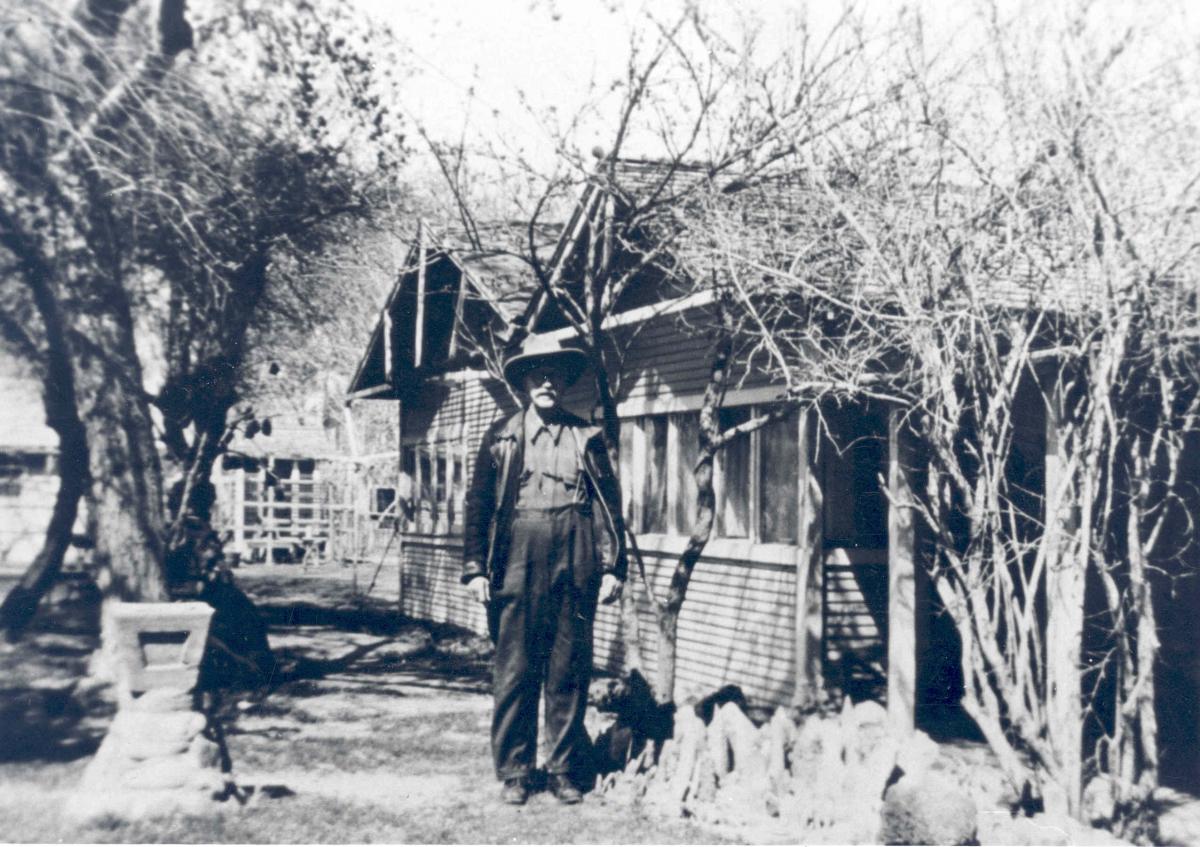How the Westside Began
 The area of Las Vegas called the Westside sits on land formerly called the McWilliams Townsite, which was the get-rich scheme of J. T. McWilliams in the early 1900s.
The area of Las Vegas called the Westside sits on land formerly called the McWilliams Townsite, which was the get-rich scheme of J. T. McWilliams in the early 1900s.
In 1902 Senator William A. Clark’s San Pedro, Los Angeles & Salt Lake Railroad hired local surveyor, J.T. McWilliams to survey and map the Las Vegas Ranch lands which the railroad had purchased from Helen J. Stewart. During the course of his work, McWilliams became familiar with the lands adjacent to the railroad’s property, which included 80 acres of unclaimed land on the west side of the railroad’s proposed right of way. He quickly applied for a patent and title to it and when it was clear the railroad would establish a depot in Las Vegas, McWilliams laid out a townsite on his parcel, and filed it with Lincoln County recorder. He saw an opportunity to provide lots for up to 3000 people. However, in 1905, William Clark’s railroad became a competitor for these same home buyers.
McWilliams and the railroad both had visions of a boom town. McWilliams's Townsite featured wide boulevards on the west side of the railroad tracks close to the Las Vegas Creek. The railroad’s plan, unlike McWilliams’s, provided a water distribution system from the Las Vegas Springs, the rights to which the railroad had acquired along with Helen Stewart’s ranch.
The Clark Townsite is present day downtown Las Vegas. It was bounded by 5th Street on the east to Main Street on the west and Clark Street on the south to Stewart Street.[1] The competition began. Clark’s ads touted the easy availability of water, while McWilliams sold between 2000 and 3000 lots assuming that the nearness of the natural springs would ensure his success. However, the railroad company established the Las Vegas Land and Water Company, laid out the Las Vegas Townsite east of the tracks, and held an auction to sell lots in May 1905. Many of McWilliams’ residents and businesses moved across the track,s leaving that original Townsite with a small group of permanent dwellers. The majority chose to leave. They erected permanent structures put them on skids and dragged them across the tracks to the new Townsite.[2] That group of people still lived there when blacks began to move west of the tracks in the early 1930s.
In 1931, casino-style gambling became legal in Nevada. Neither the new white tourists nor the white dam workers enjoyed the company of blacks as they engaged in the pleasures of Las Vegas. So gradually, African Americans moved to the old McWilliams Townsite that was originally surveyed and used as the early town of Las Vegas. In the 1930s, a forced reversal across the tracks began. City officials pushed this process by refusing to reissue licenses to black businesses in the downtown area and suggested they would issue the license if the business moved to the west side of the tracks.[3]
Before blacks could be settled in the Historic Westside, those white settlers who remained in the McWilliams Townsite and did not move their homes across the tracks back in 1905 had to face the idea and the reality of sharing their mostly all-white neighborhood. When the established residents put together a zoning petition that would prevent blacks from living in certain sections of the Historic Westside, blacks, with no place else to turn, fought back. According to a letter written to the city commissioners under the name of the Las Vegas Colored Progressive Club, blacks defiantly requested denial of the zoning petition. The letter reminded city officials that blacks were true American citizens who had fought and died for the country.[4] Blacks won the round. The local paper reported that the city considered the proposed zoning ordinance a violation of the United States Constitution.
Photo is of J. T. McWilliams at his Westside home in the 1930s.
Submitted by Claytee D. White & Peter Michel
[1] 5th Street is the same as Las Vegas Boulevard. Just west of Main Street lay the railroad tracks with a vast railroad yard, ice house, and depot.
[2] K.J. Evans, Battling the Big Boys: J.T. McWilliams (1863-1941), in The First 100: Portraits of the Men and Women Who Shaped Las Vegas (Las Vegas: Huntington Press, 1999), 30.
[3] Bob Palm, “Ghetto Hit LV Spotlight in the 1950s,” Las Vegas Sun, 27 December 1977, 3.
[4] “Review-Journal Mail Bag,” Evening Review Journal, May 11, 1932.



